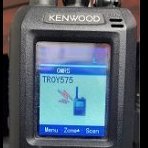-
Posts
3703 -
Joined
-
Last visited
-
Days Won
107
Community Answers
-
Lscott's post in Transmitting on non-compliant radios was marked as the answer
It really boils down to the user/operator/programmer of the radio. If a non certified radio is carefully programmed to meet the exact frequency, bandwidth and power limits of the service it would be very unlikely to be distinguishable from an officially certified radio. However the services are primarily aimed for the general public that has little to no technical knowledge of radio theory. Thus the certification rules are designed to physically limit the radio's operation to avoid interference to other services due to accidental miss adjustment of the radio if access was allowed to arbitrary, freely, adjustable frequency, power and bandwidth settings. So, in general the rules are such that a lay person could simply buy a certified radio, turn it on, and immediately use it without the possibility of disrupting other services.
Do people use opened up Ham gear, non certified commercial gear etc. on the various Part 95 services, yes, but the smart ones won't admit to it in a public forum, and they are very careful how they program their radios to avoid interference and disruptive operations. They usually have the necessary technical expertise to do so.
-
Lscott's post in Magnetic effects on a radio was marked as the answer
This is a technical question. The answer is a very qualified “maybe” and it will be specific to a particular model radio.
Now for the technical dive into why it might be an issue. Some of the more expensive radios, commercial grade, use a type of electronically tuned filter on the radio’s receiver section for better selectivity. That could be a variable capacitance diode fed with a variable DC voltage output by the microprocessor. That’s how the filter is tuned when the RX frequency is changed. That component would be OK. However I have spotted what appears to be a variable inductor, again using a variable voltage/current, to adjust the filter frequency. If it has a magnetic core the inductance could be affected by a very strong magnetic field in close proximity to the radio. That would bugger up the filter frequency and thus the receiver performance.
I think for the vast majority of radios people use a strong magnet isn’t an issue. It’s usually the high end commercial radios that use the tunable receiver input filters. And just about all of them typically use the variable capacitance diode in that circuit. Which are not affected.
-
Lscott's post in HT Modification Reactions was marked as the answer
Generally not good.
1. Transistors are not great for linearity. As the amplitude increases for more power the waveform likely deviates further from the ideal sine wave shape. Any departure indicates harmonics of the base frequency are present. That's why there is a band pass filter on the output stage of the radio. The UV-5R's, particularly the older models, were known for having poor filtering on the output. If the radio meets FCC emission standards before the mod it might not afterwards.
2. All power transistors have a power dissipation rating, and thermal resistance from the transistor's junction to the heat sink. The power amp stage, transistor, in the radio is no exception. Whatever power is going into the final amplifier stage and not coming out as RF is turned into heat. It's not unusual for the efficiency to be around 50 percent. So if you get 10 watts out that means you're dumping 10 watts of heat into the radio's case. That can turn the radio in to an instant hand warmer. Maybe even too hot to hold and likely fail the output power transistor. The junction is going to be very significantly hotter than the case due to the thermal resistance. This is why I'm not a fan of tiny radios. Not enough case size to dissipate the waste heat generated during transmit.
3. In the case of number 2 above for lets say 10 watts out, 50 percent efficiency, the drain on the battery pack is 20 watts. Just how long do you think that tiny battery pack is going to last? You'll likely will need to carry around extra battery packs if you transmit at high power a lot, and don't manage to kill the radio from excessive heat before then.
-
Lscott's post in What makes cheap coax cheap, and expensive coax expensive? was marked as the answer
It's split mainly between dielectric losses in the isolating material between the center conductor and skin effect losses in the conductors. The geometry has an indirect effect on both.
https://www.resonac.com/solution/tech/transmission-loss.html



